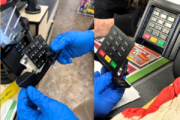If the next physician you see has a robotic bedside manner, it could be for good reason: That doctor might actually be a robot. Surgical robots that help perform delicate, minimally invasive procedures have been around for more than 15 years. Now, telemedicine robots are roving through emergency rooms, allowing remote specialists to rapidly assess and diagnose patients experiencing strokes when every second counts. Here’s a glimpse at how robotic devices add another dimension to health care.
[See: 8 Cool Uses for 3-D Printers in Health Care.]
Tele-stroke networks allow patients at satellite facilities, for instance an isolated rural hospital, to receive immediate consultations from specialists based at major medical centers, says Gerry Popolow, vice president for international client services with InTouch Health, which implements and manages a global tele-stroke network and makes a range of health-care robotic devices.
One such network hub is Thomas Jefferson University Hospital in Philadelphia, with some 25 member “spoke” hospitals. “There’s a specialty neurologist — a tele-stroke neurologist — on call at the big hospital,” Popolow says. “And their response time is amazing, which is vitally important because in stroke treatment, physicians say, ‘Time is brain.'” This network covers the three-state area of New Jersey, Pennsylvania and Delaware.
Robot-assisted care can start at home, as paramedics respond to an emergency call. A portable device, the Xpress, allows first responders to quickly connect a patient with a physician in the emergency department. That physician uses patient-provider access software — installed on a laptop, iPad or iPhone — to get an instant read on the patient’s condition.
From the patient’s perspective, Popolow says, this portable device looks like a computer screen showing the doctor’s face, but it’s much more sophisticated. “It is robotic in that the physician is able to have the opportunity to monitor the patient’s vital signs,” she says. “The EMT attaches diagnostic devices in the ambulance to the robot. It is robotic in that the physician in the emergency room is able to move the high-resolution camera in the device to zoom, pan and tilt to assess the patient — just as if they were in the ambulance. The patient experiences the doctor’s face and voice in a very natural way so the patient feels as if they are talking to a real person. And very importantly, the connectivity is very reliable.”
Through that connection, the doctor asks patients how they feel and what symptoms they’re having while viewing the patient — learning enough to make a diagnosis. That way, the right treatment can be started as soon as possible.
[See: When Health Treatments Go From Hospital to DIY.]
At the hospital, the ER team might include the life-size, 5-foot-6-inch “Vita” robot. “It’s moving around, controlled by the physician or automatically programmed to move about the emergency room to specific bedsides,” Popolow says. “That’s when the patient is seeing something that really looks like a robot to them.”
With navigation enabled by scanning systems, similar to operating a self-driving car, and sophisticated cameras, the robot allows the operator to zoom in and examine key stroke signs like pupil reactions. The robot transmits data from the ER, as well as images and other test results available in the tele-stroke data cloud. This allows instant access to the patient’s electronic medical record, real-time vital signs and other health monitors to enable the on-call, off-site specialist to give a diagnostic and treatment opinion from his or her remote location.
Growing Networks
Tele-stroke capabilities exist at Cleveland Clinic, Mayo Clinic and more than 1,500 other large and small hospitals throughout the world, Popolow says. Cost-efficiency, as always, is an issue. “In the U.S., we lease our solutions to hospital systems, and depending on the complexity of the requirement, these [costs] range from hundreds of dollars per month to thousands,” Popolow says. Compared to the expense of hiring a full-time specialist for individual hospitals, she says, that’s “a fraction of the cost.”
Patients are less startled than you’d expect when receiving care from a robot, Popolow says: “The fact that they see a physician right there, treating them and diagnosing them and asking the right questions — it becomes a very real experience to them, and it’s like they’re talking to a person.”
Disinfection, Robot Style
Other robots are making their mark in a different way as they disinfect hospitals by zapping stubborn bacteria to prevent infections from spreading.
Hospital-acquired infections are a serious problem, and the Xenex robot is a serious piece of equipment. The robot technology works by pulsing an inert gas called xenon to produce a bright, high-intensity UV light. The robot emits the flashing ray, which penetrates and kills organisms on hospital surfaces, including methicillin-resistant Staphylococcus aureus (MRSA) and Clostridium difficile, both notorious for spreading disease through hospitals and making sick patients sicker.
Recently, Marin General Hospital in Greenbrae, California, purchased the robot at a cost of about $100,000 to help reduce hospital infection rates, as reported August 27 in the Marin Independent Journal. Now, a few months after the robot’s deployment, it’s too early for data to show decreased infection rates, but based on study results from other facilities, the hospital expects significant improvement, says Dr. Joel Sklar, the chief medical officer.
“The ultraviolet light is powerful enough that it just kills everything that you can’t get with regular cleaning with alcohol and with disinfectants,” Sklar says. “It gets in little corners. Anything in the line of sight that the light goes to is killed, including spores.” For instance, he says, the robot’s beam destroys hard-to-kill C. diff bacterial spores, which can cause severe diarrheal illness.
[See: 7 Ways Technology Can Torpedo Your Health.]
The robot, named “R2Clean2” by hospital staff, does its part after housekeeping services have completed their standard cleaning procedures. Nobody can be in the room while the robot works, although curious observers can watch through a window. At Marin General, Sklar says, the robot’s primary assignments have been critical and intensive care units, operating rooms and rooms where patients with infectious conditions have stayed, often isolation rooms. Sklar emphasizes that the robot is only one piece of the hospital’s larger, comprehensive infection-control effort, which includes greater hygiene vigilance starting with the lowest-tech method of all: hand-washing.
More from U.S. News
7 Reasons to Call Off a Surgery
11 Items to Pack in Your Hospital Bag
11 Things Seniors Should Look for in a Health Provider
Robots in White Coats and Stethoscopes originally appeared on usnews.com







